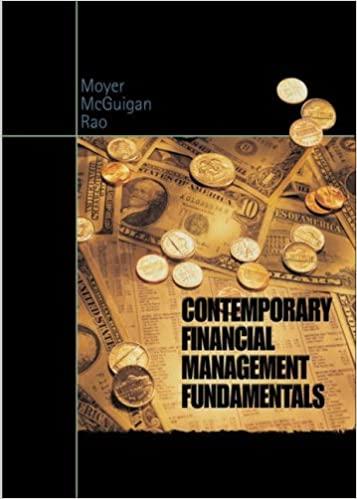Answered step by step
Verified Expert Solution
Question
1 Approved Answer
For a portfolio, if the 9 9 % one - day VaR is calculated to be $ 1 0 , 0 0 0 , what
For a portfolio, if the oneday VaR is calculated to be $ what would be the Expected Shortfall ES if the average loss on the worst days is $
a $
b $WRONG
c $
d $
Value at Risk for a given equity portfolio is:
a the worst case loss that can be experienced in the equity portfolio with a certain level of probability
b the regulatory capital needed to cover the underlying risk in the equity portfolio
c the maximum loss that can be experienced in the equity portfolio over a specified holding period WRONG
d the underlying volatility of the equity portfolio
Which of the following is true?
a Expected shortfall is a measure of liquidity risk whereas VaR is a measure of market risk
b Expected shortfall is always greater than VaR
c Expected shortfall is sometimes greater than VaR and sometimes less than VaR WRONG
d Expected shortfall does not depend on the shape of the tail of the distribution
When flipping a fair coin, the odds of getting tails are:
a
b
cWRONG
d
The Expected Shortfall at a confidence level indicates that:
a The portfolio will not lose more than the Expected Shortfall in of cases.
b of all losses will be greater than the Expected Shortfall. WRONG
c The average loss in the worst of cases will be equal to the Expected Shortfall.
d of all losses will be less than or equal to the Expected Shortfall.
A Value at Risk VaR measure does not provide information about:
a The time period over which the VaR is calculated.
b The average loss expected within the VaR threshold. WRONG
c The probability of exceeding the VaR amount.
d The size of potential losses beyond the VaR threshold.
Step by Step Solution
There are 3 Steps involved in it
Step: 1

Get Instant Access to Expert-Tailored Solutions
See step-by-step solutions with expert insights and AI powered tools for academic success
Step: 2

Step: 3

Ace Your Homework with AI
Get the answers you need in no time with our AI-driven, step-by-step assistance
Get Started


